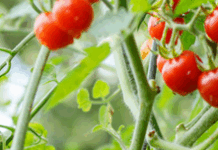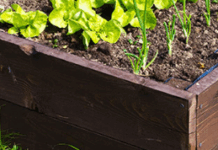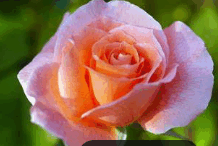https://hnr.k-state.edu/extension/info-center/newsletters/index.html
Blog Post: http://www.ksuhortnewsletter.org
Video of the Week: Flower Bed Design
https://kansashealthyyards.org/all-videos/video/flower-bed-design
UPCOMING EVENTS
More Plants From Your Plants: Introduction to Vegetative Plant Propagation
Wednesday, February 1, noon to 1 p.m.
Vegetative propagation, cloning, and asexual propagation are all terms used to describe the process of making new plants that are genetically identical to your existing plants. Join Dr. Jason Griffin, Woody Ornamentals Horticulture Extension Specialist, as he discusses the basics of plant propagation for the hobby gardener. With a little knowledge and some simple tools, learn how to be successful propagating your plants.
https://hnr.k-state.edu/extension/consumer-horticulture/garden-hour/
VEGETABLES
Preventing Potatoes from Sprouting in Storage
Home gardeners have had to rely on proper storage conditions (cool and moist) to prevent potatoes from sprouting. But sprouting will eventually occur even if the gardener does everything right. Research by Mary Jo Frazier, Nora Olsen and Gale Kleinkopf from the University of Idaho have found products that should help home gardeners.
These researchers were looking for an organic method to control potato sprouts. They found essential oils from some herbs and spices to be effective sprout inhibitors. Specifically they found that spearmint oil, peppermint oil and clove oil suppressed sprouting by physically damaging rapidly dividing cells in the sprout. Each of these products is so safe that the FDA has approved them for addition to food.
Several application methods were considered though most were only suitable for commercial storage facilities. The only practical method for homeowners was one the researchers labeled a “low-tech” wick method. This was accomplished by placing a small piece of blotter paper saturated with spearmint or peppermint oil in a box with the potatoes. This method was not recommended for the clove oil. Though it was found that peppermint and spearmint oils were equally effective in suppressing sprouts, the peppermint oil was less likely to affect flavor of the potatoes. Reapplication at two- to three-week intervals will be needed for continued sprout suppression. Little to no residue was found on the potatoes from these products due to their high volatility. The first application should be done before sprouting occurs.
Blotting paper is much more difficult to find than it was in the past and so you may want to substitute blank newsprint. However, if blotting paper is desired, try herbarium supply houses. Blotting paper is used to press plant specimens. (Ward Upham)
Saving Vegetable Seeds from Crops Grown This Year
If you wish to save vegetable seeds from one year to another, there are certain things that must be kept in mind. Seed from hybrid varieties will not come back true. In other words, the plants grown from seed from a hybrid will grow but will be quite variable and will not be like the parent. For example, if you save seed from a hybrid tomato, you will still get a plant that produces tomatoes but yield will likely be much less and the fruit will lack many of the good characteristics of the parent. If you want a plant just like the parent, you must use seed from an open-pollinated variety rather than a hybrid. Heirloom plants are open-pollinated. Any plant listed as an “F1” is a hybrid.
Not only must you use open-pollinated plants but you must prevent contamination from other plants of the same species. Note that contamination from other varieties has absolutely no effect on the current season’s fruit characteristics. It only affects the fruit grown from seed of those contaminated varieties. Preventing cross-contamination can be done via several methods.
• Distance: make sure that your plants are far enough away from other varieties of the same species that the pollen from neighboring plants cannot reach yours. The distance varies considerably depending on species and whether the plant is wind or bee pollinated.
• Mechanical: This can be as simple as covering the unopened female flower of a bee pollinated plant with a bag and then hand pollinating with the male flower of the same variety. The bag is then placed back over the flower until the fruit starts to form. This is commonly used for the vine crops such as squash, muskmelon and watermelons as these produce separate male and female flowers and are bee pollinated. Another mechanical method is to place a screened-in cover over plants that are bee pollinated. This would work well for peppers.
• Time of Flowering: Commonly used for sweet corn. Many farmers will plant a small area of sweet corn in with their field corn even though sweet corn quality is much less if it crosses with field corn. The reason this can work is usually the sweet corn has finished pollination by the time the field corn tassels, thereby preventing contamination.
This seems way too complicated. Is there an easy way to start? Yes there is! Start with tomatoes. They will not cross-pollinate unless you grow a potato-leaved variety. Therefore, you can grow several different open-pollinated varieties in the same garden without worrying about contamination.
If you would like to save seed from other species, I would suggest you buy a good reference. The book I use is “Seed to Seed” by Suzanne Ashworth. (Ward Upham)
FRUIT
Collect Scion Wood Now
If you are planning on doing any grafting this spring, now would be a good time to collect scionwood. Following are tips on how to choose good scion wood.
– Scions should be cut from one-year-old wood.
– Buds should be prominent and widely spaced. Water sprouts work well for this. Water sprouts are twigs that grow straight up from a major branch.
– Inner bark should be light green and the wood creamy white.
– Best scions have more wood than pith; small diameter wood often has wide pith.
– Older bearing trees produce poor scions unless pruned heavily. The best scions are toward the top of the tree. You may need a pole pruner even for small trees.
– Cut shoot into 6-8 inch pieces having at least 3 buds per stick.
– The best scion is often the basal piece.
– Always discard the terminal (the end piece).
– Store in the refrigerator in a plastic bag with moist paper towels.
If you are unfamiliar with grafting but would like to learn, the University of Missouri has an excellent publication at https://extension.missouri.edu/publications/g6971.
Practice your technique on wood you pruned off in March. Try doing about 100 cuts. (Ward Upham)
Cloning Apple Trees
We occasionally receive calls from gardeners who want to know how to treat an apple seed so it will germinate. Usually, the gardener is trying to reproduce an old apple tree that was special for some reason (good quality fruit, planted by grandparents, etc.) Unfortunately, apples grown from seed will not be like the parent. About 1 in every 80,000 apple trees grown from seed will be as good as the apples we are used to eating. Apple trees grown from seed usually have small and inferior quality fruit.
If you want a tree exactly like the parent, you must propagate that tree vegetatively. In the case of apples, this usually means grafting for homeowners. Apple trees are actually quite easy to graft, even for novices. Don’t be afraid to try even if you haven’t grafted before. The step that needs to be done at this time of year is the choosing and cutting of scion wood or small branches that will be grafted on top of a rootstock. The rootstock is a separate tree that has good root characteristics and often disease resistance. Also rootstocks can have a dwarfing effect on the grafted tree. So our fruit trees are actually two trees spliced together. The roots and beginning of the trunk is the rootstock. The upper portion of the trunk and all the branches is called the scion. It is the “good” part of the tree. For example on apples, the scion might be a Jonathan, Winesap, Granny Smith or any other of a number of different cultivars. The rootstock for all of these varieties may vary or may be the same depending on the desires of the propagator. See the accompanying article in this week’s newsletter for instructions on how to collect scionwood.
If you don’t have an existing tree to graft onto, you will need to plant a rootstock this year for grafting onto next. Fruit trees are normally grafted (or budded) onto specially selected rootstocks. These rootstocks usually reduce tree size. For example, a tree that normally would reach 25 feet tall will only reach 10 feet if it is grown on a certain rootstock. Dwarfing rootstocks also allow apples to bear fruit a year or more earlier.
Note that rootstock reduces tree size, not fruit size. Therefore, a Golden Delicious tree that only reaches 8 feet tall due to a dwarfing rootstock, will bear the same size fruit as a Golden Delicious tree that is 25 feet tall.
A tree on its own roots normally takes 5 to 7 years before it will bear. Semi-dwarf trees bear in 4 to 5 years, and dwarf trees bear in 3 to 4 years. Unfortunately, not all dwarfing rootstocks are well adapted to Kansas conditions. Semi-dwarf trees usually are a better choice for us. Fully dwarfed trees often are uprooted or break at the graft during high winds. Semi-dwarf trees are usually more than 50% the size of a standard (non-dwarfed) tree.
So, where do you buy rootstocks to graft onto? Most nurseries only sell trees that are already grafted. A company that does sell rootstocks is Raintree Nursery, Morton, WA, (360) 496-6400. See https://raintreenursery.com/collections/apple-rootstock for apple rootstocks.
Another is Cummins Nursery, (865) 233-3539, https://www.cumminsnursery.com/buy-trees/index.php?type=rootstock .
What rootstock is best? There are a several choices that should work well in Kansas. An old favorite is Malling-Merton (MM) 111 as it is well-adapted to Kansas conditions and can tolerate heavier soils. Trees will be 80% the size of a “standard” tree. Malling-Merton (MM) 106 is a good choice for well-drained soils. Trees will be about 70% the size of a standard tree. Other rootstocks can be used but make sure they are well-anchored and not described as brittle.
It is also possible to buy a tree from a local nursery and graft your clone onto a side branch. This will give you one tree that produces two different apples. One disadvantage of this method is that it is possible to prune off the special clone by mistake in later years.
This information does not include the details of grafting or budding or subsequent care. The Missouri Extension Service has an excellent publication on grafting at
https://extension.missouri.edu/publications/g6971 as well as a second publication on budding at https://extension.missouri.edu/publications/g6972 .
If you use a knife, be sure to practice your cuts on wood you prune off in March. After you do about 100 cuts, you will start to get the hang of it. A grafting tool can make this job even simpler as it makes the proper cut automatically. Do a search on “grafting tool” to see what is available.
If you find grafting intimidating, Raintree Nursery does custom grafts. In other words, you must collect your own scionwood and send it to Raintree Nursery. They will make the graft and send it back to you. See https://raintreenursery.com/collections/pear-rootstock/products/custom-graft for details. (Ward Upham)
Multiple Grafts on Apple Trees
Nurseries often sell apple trees that bear more than one variety of fruit. The secret is grafting. All apple trees are grafted, which is done by grafting the apple-producing variety (the scion) on a variety chosen for its dwarfing effects (the rootstock). A tree with more than one variety simply has more than one fruiting variety grafted onto a single rootstock. Grafting allows growers to have a single tree that could produce Jonathan, Red Delicious and Golden Delicious apples. These trees can be a unique attraction and a good conversation point in a fruit garden. If space is limited, a multiple grafted tree may allow growers to have a greater variety of fruit than with individual varieties on separate trees. However, there are some possible drawbacks. Whoever prunes the trees may not recognize the individual grafts and may unknowingly prune off one of the varieties. Also, varieties may vary in vigor, and stronger varieties can crowd weaker ones. There also may be a difference in susceptibility to disease among varieties and among different kinds of fruit. Some may have resistance to a disease and not require protection, but others are susceptible and do require protection. If the susceptible fruits are protected, the more resistant ones will be sprayed unnecessarily. (Ward Upham)
MISCELLANEOUS
Growing Your Own Firewood
In order to avoid energy costs, some homeowners are turning to wood for heat. Plant species is an important consideration as not all trees have the same density and therefore, heat value. The greater the dry weight, the better.
The highest value for trees commonly found in Kansas is osage orange (hedgeball tree) at 4,800 pounds per cord. Osage orange has a gnarly growth habit and a nasty set of thorns. This species also sparks which isn’t a problem in a wood-fired boiler but certainly would be in an open fireplace.
Black locust is next with 4,200 pounds per cord. Black locust is a fast grower and also has excellent burning qualities and makes a nice bed of coals. However, it is hard to split, suckers, and has some relatively small thorns, especially on young trees. Suckering means the parent trees sends up additional trees from the roots. Therefore these trees spread.
Bur oak and red oak come in at 3,800 and 3,500 pounds per cord respectively but are not fast growers. Mulberry, however, has the same weight as red oak but grows more quickly. Silver maple has less heat value (3,000 pounds per cord) but is a very fast growing tree.
Black locust is a tempting choice for this purpose due to its heat value and fast growth. However, black locust suckers and is invasive and can spread to areas you don’t want and so be careful if you choose this species. Another species, such as mulberry may work better for you. Or consider planting several different species in rows.
So, how do you set out your plantation? Dr. Wayne Geyer, our late forestry professor, did many woody biomass studies over a period of 35 years. Following are some recommendations that have come out of his studies.
– Plant on a close spacing, 4 to 6 feet apart. This maximizes yield and reduces side branching.
– Control weeds the first two years.
– Harvest every 5 years though slower growing trees will take longer. Most trees will resprout and can be reharvested.
– Plant about 1 acre per year for 5 years if you wish to supply the majority of the firewood
needed to heat your home.
Trees mentioned above and available from the Kansas Forest Service include mulberry, osage orange, bur oak, red oak and silver maple. (Ward Upham)
Use a Planting Calendar
If you start vegetable plants indoors, it is often helpful to list seeding dates on a calendar so that plants are ready for transplanting at the proper time. To do this, choose your transplant date and count back the number of weeks necessary to grow your own transplants. For example, cabbage, broccoli, and cauliflower are usually transplanted in late March to early April. It takes 8 weeks from seeding to transplant size. Therefore, plants should be seeded in early February.
Information on how many weeks it takes to grow transplants is available in our January 10 newsletter at: https://hnr.k-state.edu/extension/horticulture-resource-center/horticulture-newsletter/documents/2023/230110-Newsletter-01.pdf . The table is in the last article in the newsletter.
Below are examples of some common vegetables grown for transplants and a recommended date for seeding. Dates are Saturdays as this is when many homeowners have the most free time. The dates are not set in stone, and a week earlier or later will not ruin the plants. Also, you may want to seed a week or two earlier if you are in southern Kansas and possibly a week later if you are in northern Kansas. Calendars can be reused year after year by a slight reset of the dates. Also keep notes on how well the transplants did so you can tweak the planting schedule. Your conditions may result in plants that need a bit more or a bit less time.
Crop Seeding Date Transplant Date
Cabbage, Broccoli & Cauliflower January 28 March 25
Lettuce (if you grow transplants) January 28 March 25
Peppers March 18 May 13
Tomatoes March 25 May 6
(Ward Upham)
Contributors: Ward Upham, Extension Associate
Division of Horticulture
1712 Claflin, 2021 Throckmorton
Manhattan, KS 66506
(785) 532-6173
For questions or further information, contact: wupham@ksu.edu OR cdipman@ksu.edu
This newsletter is also available on the World Wide Web at:
http://hnr.k-state.edu/extension/info-center/newsletters/index.html
The web version includes color images that illustrate subjects discussed. To subscribe to this newsletter electronically, send an e-mail message to cdipman@ksu.edu or wupham@ksu.edu listing your e-mail address in the message.
Brand names appearing in this newsletter are for product identification purposes only. No endorsement is intended, nor is criticism implied of similar products not mentioned.
K-State Research and Extension is committed to making its services, activities and programs accessible to all participants. If you have special requirements due to a physical, vision or hearing disability, or a dietary restriction please contact Extension Horticulture at (785) 532-6173.





